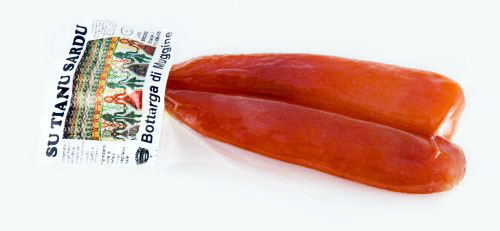Many elements of Sardinian cooking are unique to the island and may be quite difficult to find in the U.S. The fascinating recipes and tastes are remarkably difficult to reproduce outside of Sardinia. Even the types of foods may leave readers confused. A brief glossary may be useful to navigate the cuisine of Sardinia.
Abbamele – Sardinians are world-renowned experts when it comes to honey. Bees thrive in the climate and the nectar they collect and honey they produce are found in a remarkable array of recipes. Honey is used to flavor virtually every Sardinian signature dish, including the savory ones. You will find a jar of miele millefiori (thousand flower honey) in every home, but two of their honeys are flavored unlike anything else. Miele amaro (bitter honey) is made from the pollen of the corbezzolo (strawberry trees). It is a main ingredient in most Sardinian desserts. The other honey is abbathu. This is produced by pressing together honeycombs to extract the honey and pollen together. The liquid is then reduced in copper pots until a thick semi-sweet honey is produced. The result is perfect on everything from salads to ice cream.
Bottarga di muggine is a Sardinian caviar made from the roe of grey mullet. Whole bottarga is very difficult to find in the U.S., but some specialty stores carry a grated version. Try it over a salad of celery and tomatoes.
Casu marzu translates as “rotten cheese.” The FDA would have a field day with this product! The cheese is literally decomposing and alive with maggots (that often jump when disturbed). The maggots create a rich, very soft and creamy Sardinian delicacy that is both subtle and pungent. Although it is officially banned from sale in Italy, you might find it under the counter at a local cheese shop, since it can only be purchased with a wink and a nod!
Cannonau is the red wine of Sardinia. It has become popular in the U.S. in part due to its taste, but also because the unique antioxidants, among other factors, that contribute to the extraordinary longevity of Sardinians.
Fregula are small, toasted bits of semolina pasta. The name comes from the Latin ‘fricare,’ which means to crumble. That is exactly what it looks like – crumbled bits of handmade pasta. First the pasta is made, then it is cut into small pieces, then mixed with a little water and flour to give it a rustic coating. The pasta pieces are then sifted through a sieve, placed on a tray to dry and toasted twice before they are ready to eat.
Mirto is the myrtle plant. You may know myrtle as an ornamental garden plant, but in Sardinia it is regularly used in cooking. Like bay leaves, the whole leaf is used to infuse marinades and soups with its spicy, citrusy and bitter flavor. The leaf is then discarded before the dish is served.
Olive oils – Most households in Sardinia have at least two types of olive oils on hand. One is for cooking and the other is for finishing. An example of a finishing olive oil is fruttato, which means fruity and it retains the strong flavor of the olive. Look for single orchard or organic on the label to help find a good finishing oil.
Pane – The breads of Sardinia are like a language unto itself. They are synonymous with life itself. There are countless types of bread that are baked on the island. Pane lentu is cooked in a very hot oven until it puffs like a bubble, split in half, stacked and covered with linen cloths to be kept warm. It is later toasted to make pane carasau, which is for all intents and purposes, translates as toast! It is the bread of the shepherds who carried it on their long journeys to the mountains. They ate it with a little sheep’s milk and olive oil or by itself. Sometimes referred to as carta da musica for its resemblance to sheet music, it is very versatile and can be used as an eating utensil or wetted to have a noddle-like consistency. There is also moddizzosu, a soft bread made with cooked potatoes and pane e gherda, made with flour, a little oil and bits of pig fat.
Sardo – This soup of fregula with clams is a quintessential Sardinian dish. It uses fish stock, littleneck clams, fregula, Roma tomatoes, garlic, parsley and saffron. Everyone has their own variation, adding a bit more spice or their own special ingredients and of course, when you are served a bowl in any household in Sardinia, you can rest assured that cook assuredly believes theirs to be the best!





